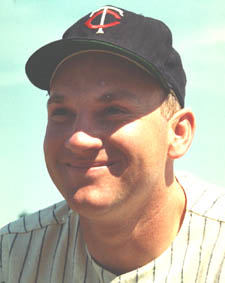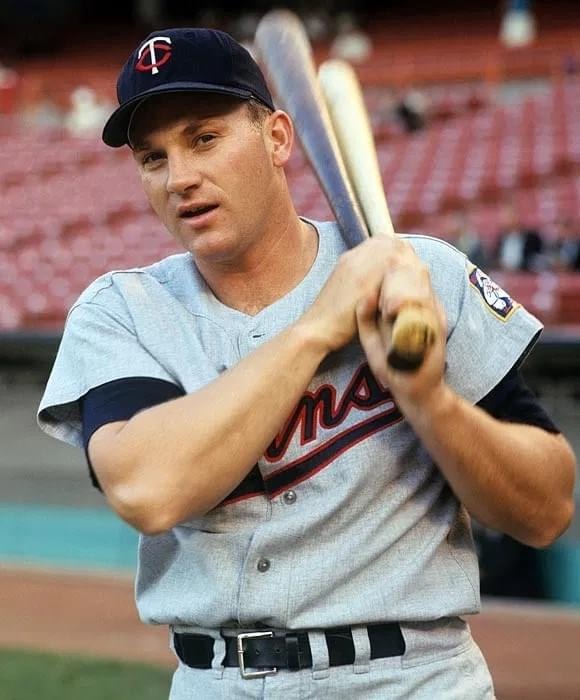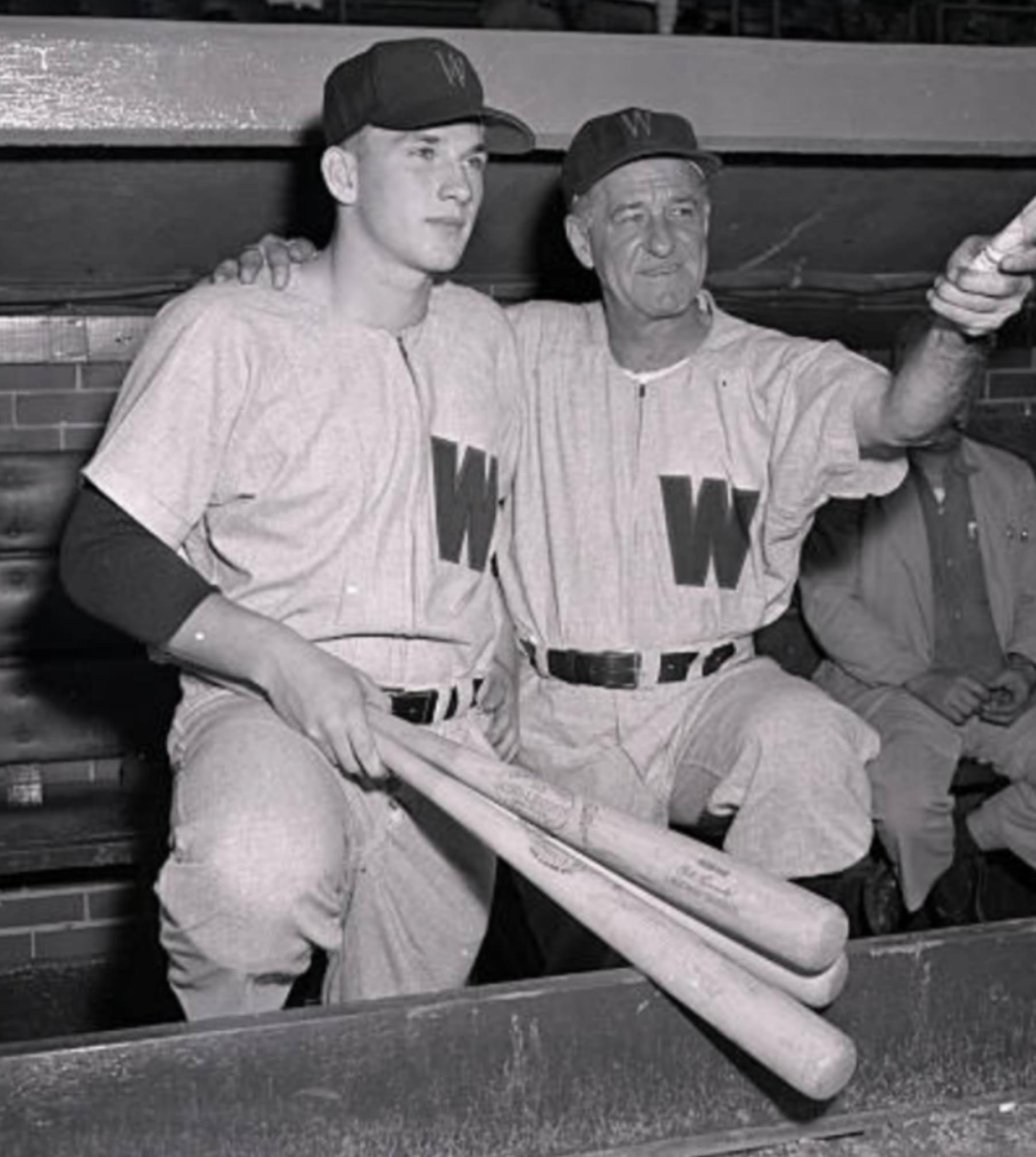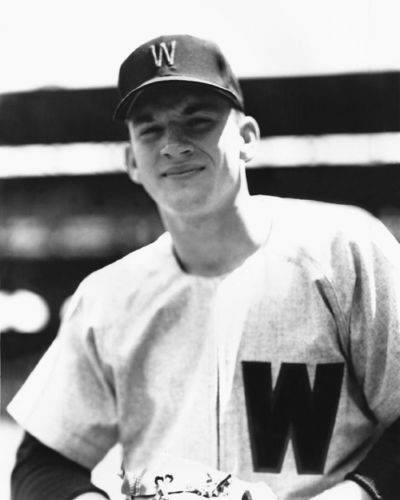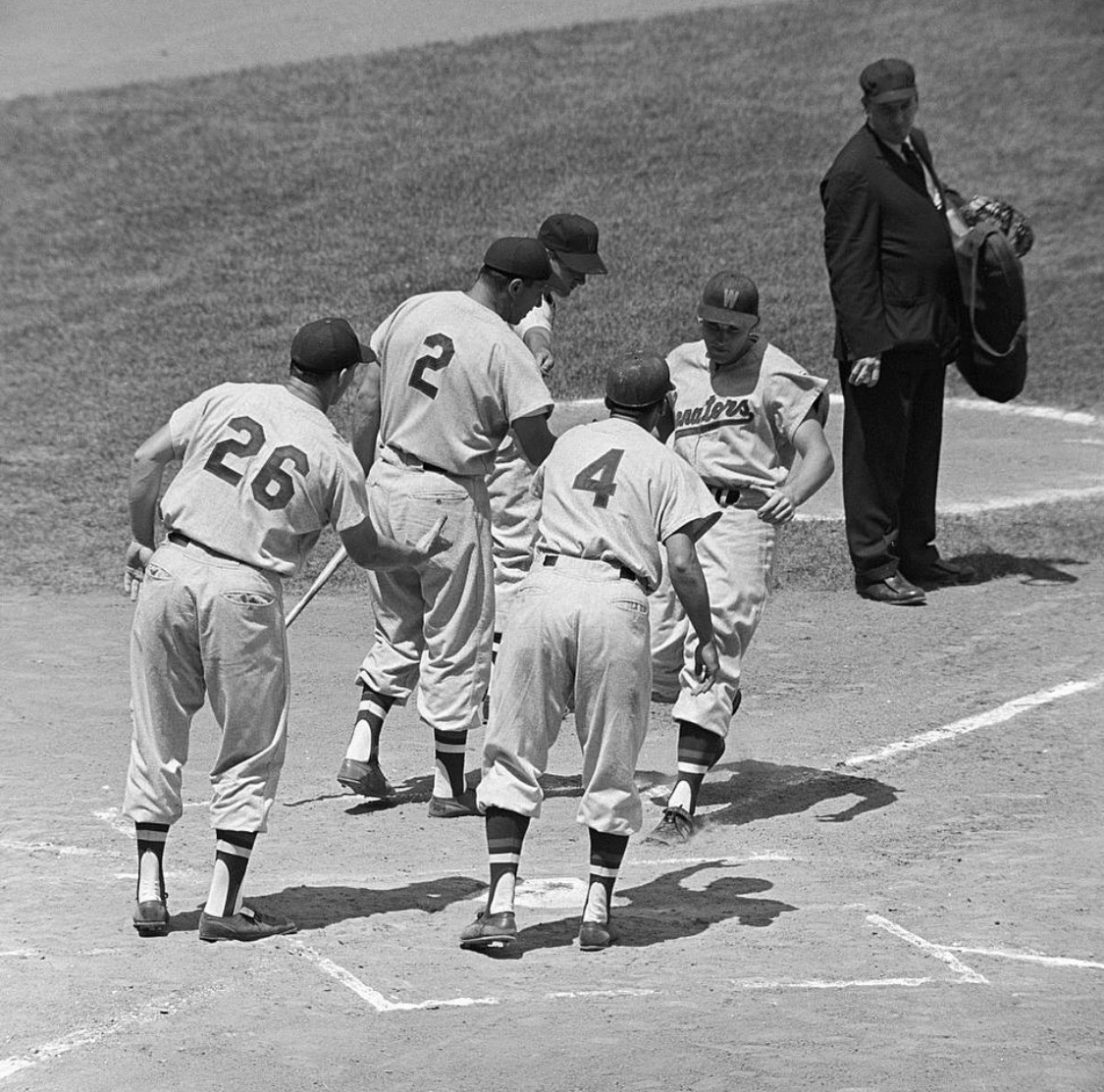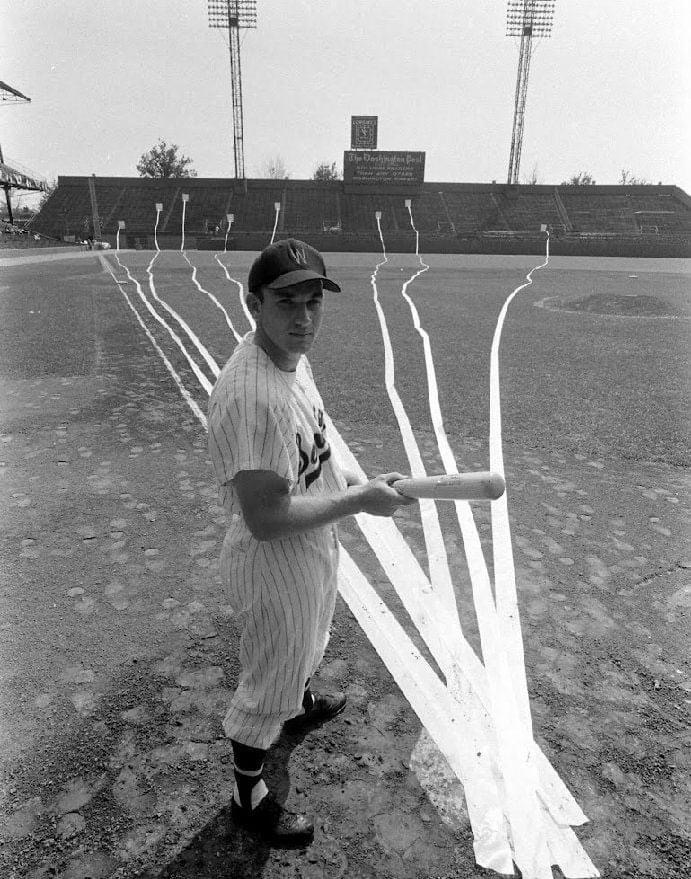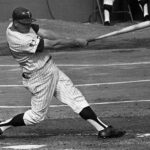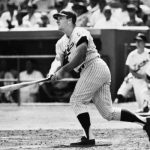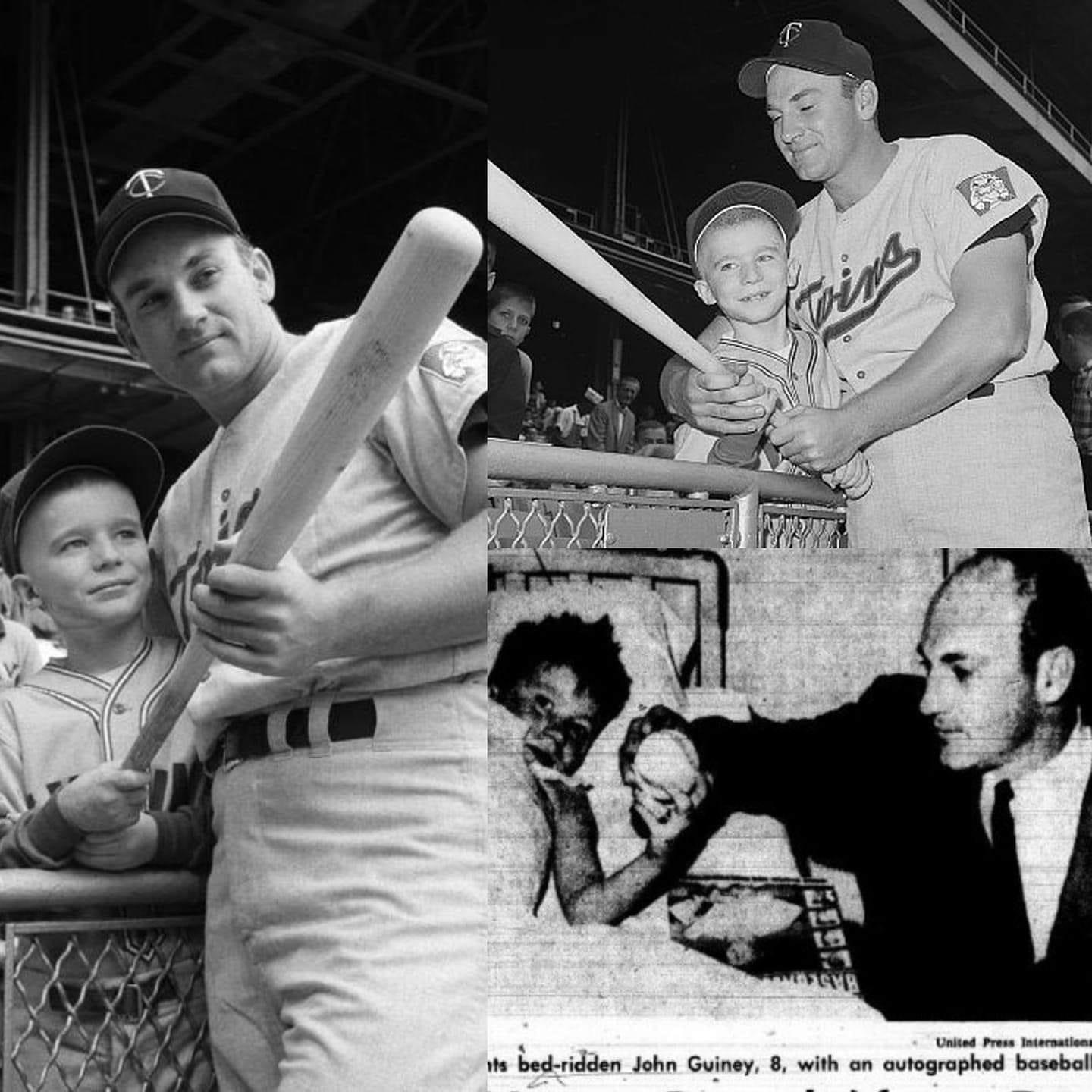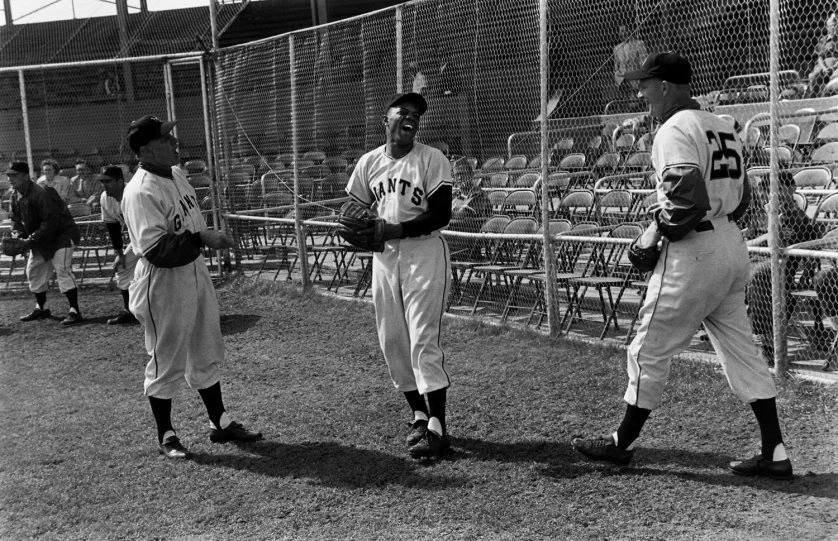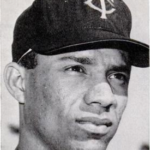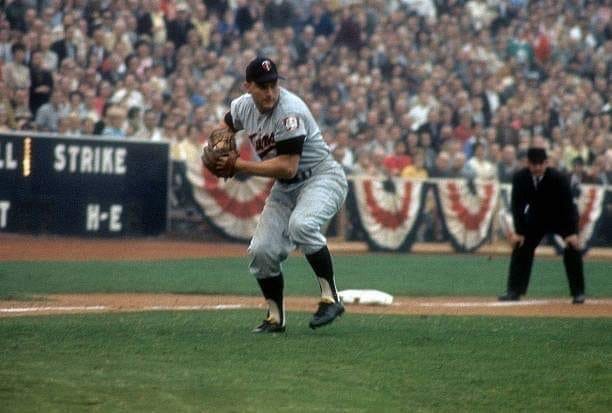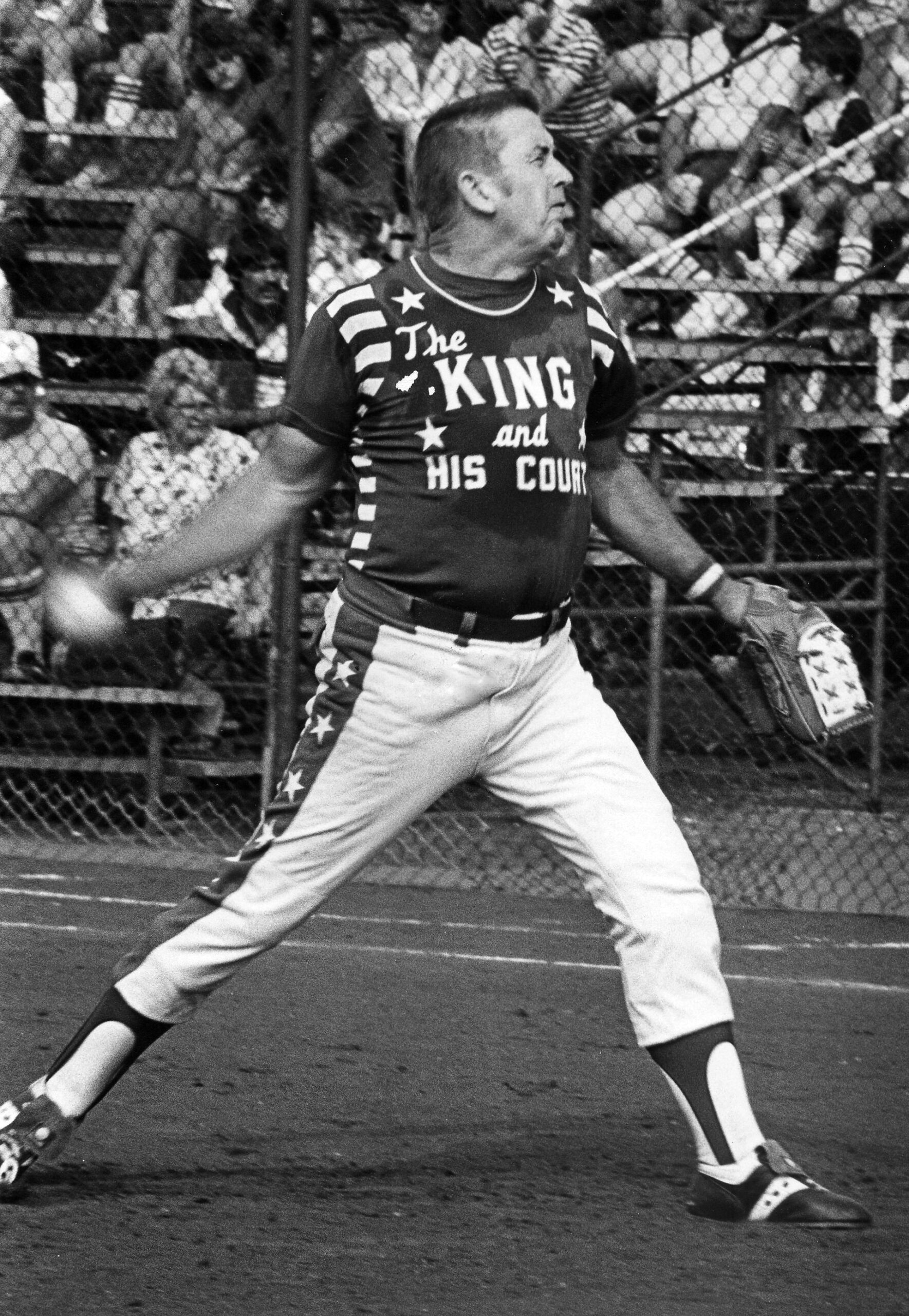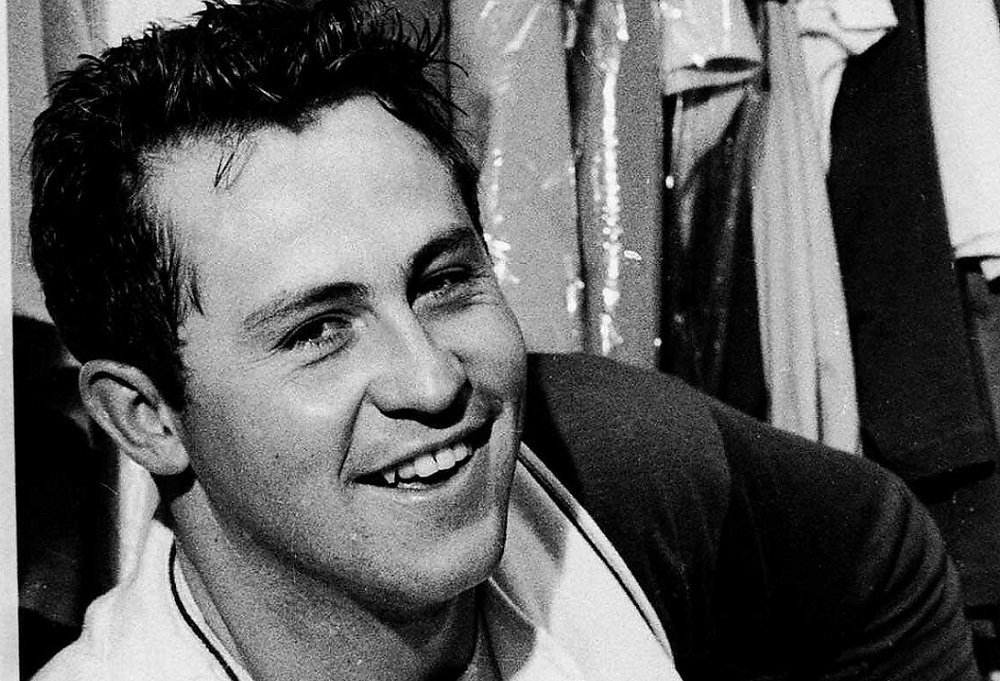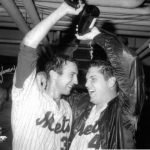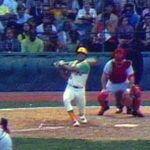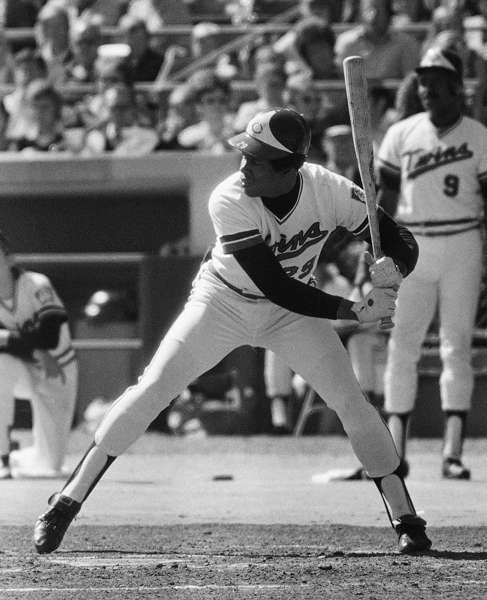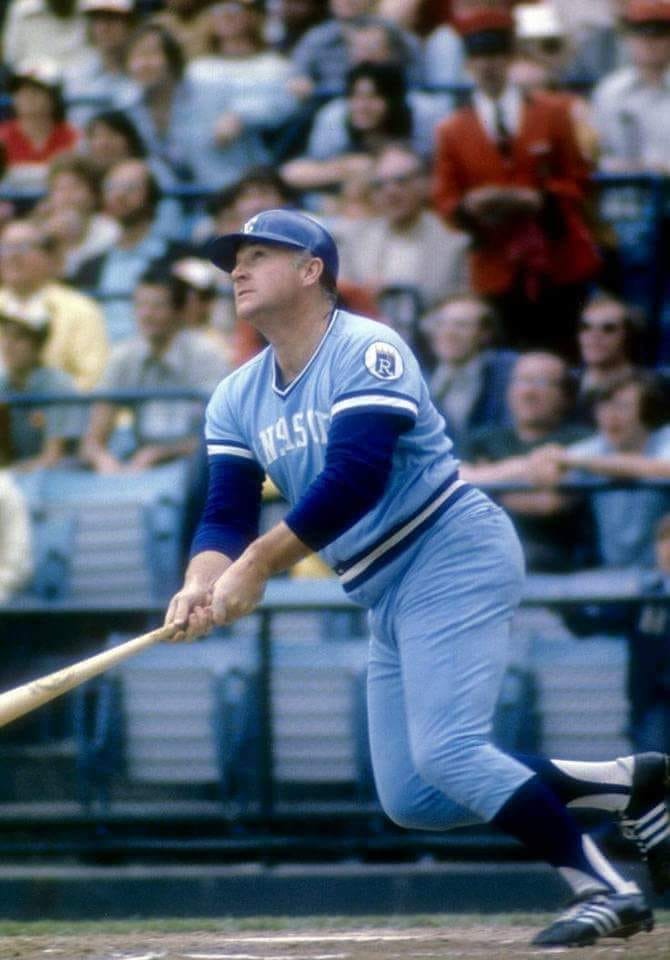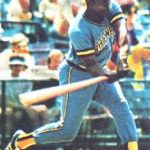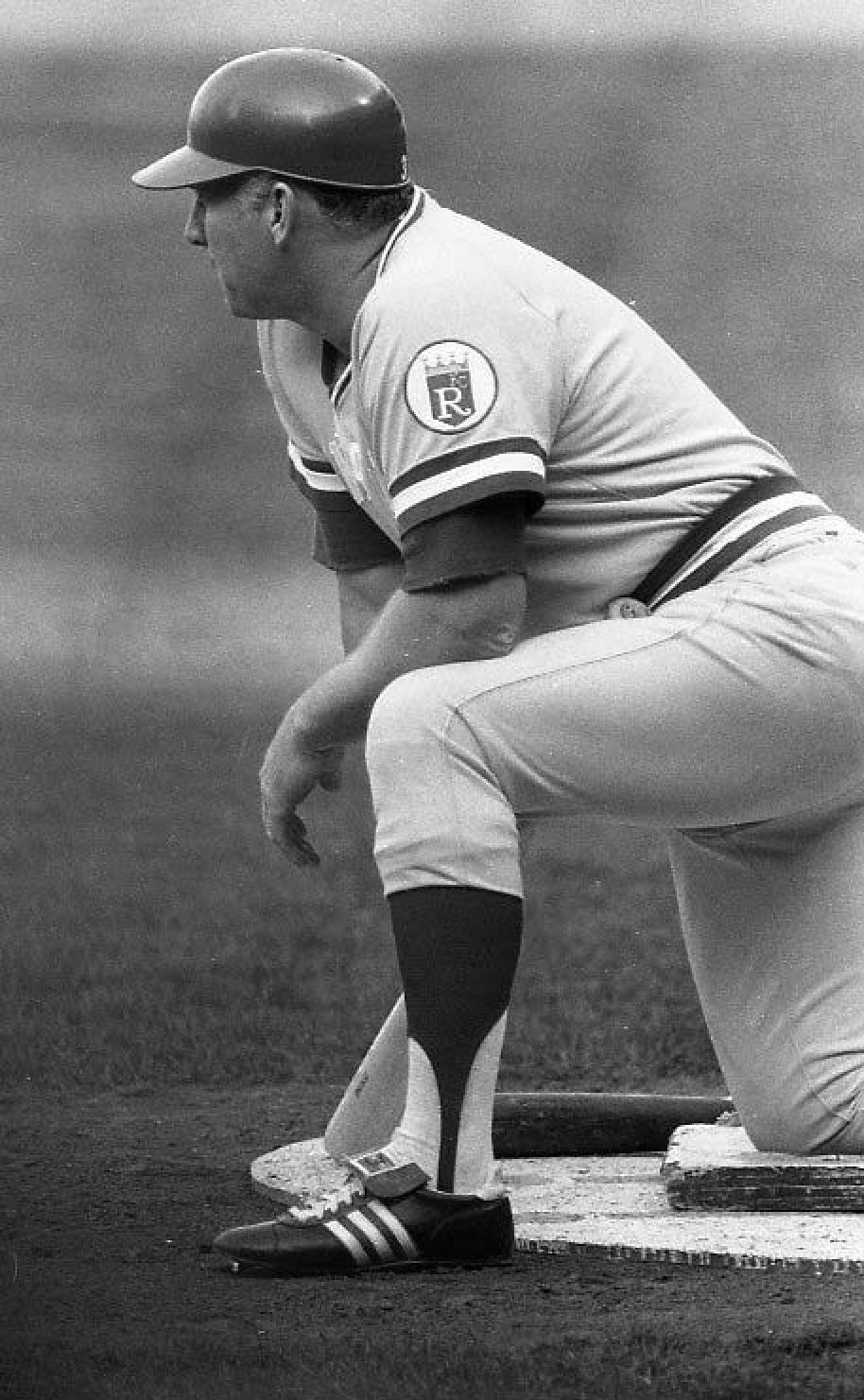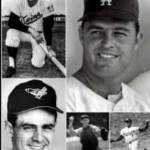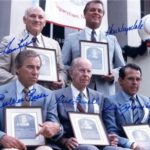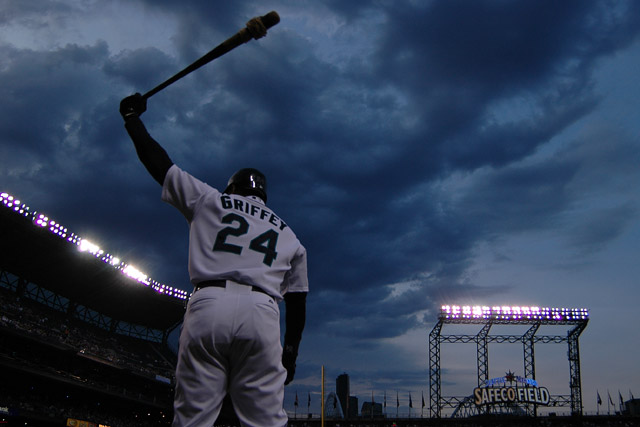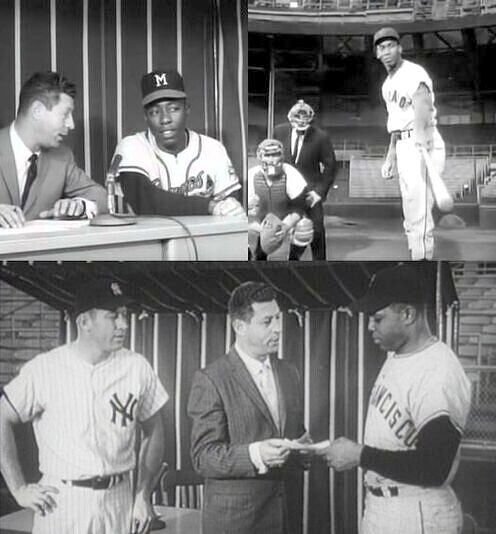Harmon Killebrew Stats & Facts
Harmon Killebrew
Positions: First Baseman, Third Baseman and Leftfielder
Bats: Right • Throws: Right
6-0, 195lb (183cm, 88kg)
Born: June 29, 1936 in Payette, ID
Died: May 17, 2011 in Scottsdale, AZ
Buried: Riverside Cemetery, Payette, ID
High School: Payette HS (Payette, ID)
School: Albertson College (Caldwell, ID)
Debut: June 23, 1954 (8,756th in MLB history)
vs. CHW 0 AB, 0 H, 0 HR, 0 RBI, 0 SB
Last Game: September 26, 1975
vs. TEX 1 AB, 0 H, 0 HR, 0 RBI, 0 SB
Hall of Fame: Inducted as Player in 1984. (Voted by BBWAA on 335/403 ballots)
View Harmon Killebrew’s Page at the Baseball Hall of Fame (plaque, photos, videos).
Full Name: Harmon Clayton Killebrew
Nicknames: Killer
View Player Bio from the SABR BioProject
Nine Players Who Debuted in 1954
Hank Aaron
Harmon Killebrew
Bill Skowron
Vic Power
Camilo Pascual
Ryne Duren
Wally Moon
Don Zimmer
Frank Lary
All-Time Teammate Team
Vintage Baseball HOT ON EBAY
Card Collections ENDING SOON ON EBAY
MOST WANTED ROOKIE CARDS
VINTAGE SPORTS TICKETS
Baseball Hall of Famers
Notable Events and Chronology for Harmon Killebrew Career
Biography
“Killer” might seem like an odd sobriquet for a stocky, soft-spoken Mormon who once included washing dishes among his favorite hobbies, but when one considers how Harmon Killebrew massacred fastballs throughout the 1960’s, the nickname becomes entirely appropriate. No player hit more home runs that decade than Killebrew, and few could hit them as high or as deep. Playing in an era of cavernous ballparks and dominant pitchers, Killebrew finished his career with an astonishing 573 home runs, good for tenth best all time, and second only to Babe Ruth among American League sluggers. Powered by the Killer’s prodigious bat, the Minnesota Twins went from perennial also-rans at the beginning of the ‘60’s to pennant winners by decade’s end. To many of his fans and fellow players, Killebrew wasn’t just the Twins’ franchise player – he was the franchise. Said fellow Hall of Famer Reggie Jackson, “If Harmon Killebrew isn’t the league’s best player, I’ve never seen one. He’s one of the greatest of all time.”
Harmon Killebrew Biography
The youngest of four children, Harmon Killebrew was born in Payette, Idaho in 1936. His father, a former college football star, encouraged his son’s passion for sports, but cautioned him never to let his passions get the better of him between the lines. “My father taught me to keep my emotions under control,” Killebrew once said. “If they get out of control, then the opposition has the advantage.” While other superstar sluggers made headlines with their flashy play and off-the-field antics, Killebrew became renowned for the stoic reserve and quiet intensity with which he approached his craft. Over the course of a 22-year career in which he played 2435 games, Killebrew was never once ejected from a ballgame for arguing with an umpire.
An honors student in high school, Killebrew was offered an athletic scholarship to the University of Oregon, but opted instead to play semi-pro ball and attend college in his home state. After hitting a blistering .847 for the local farm team, Killebrew was scouted by Washington Senators owner Clark Griffith, acting on a tip from Idaho Senator Herman Welker. The Boston Red Sox also expressed an interest in the young slugger, but Griffith eventually signed the 17-year-old Killebrew to a $50,000 contract in June of 1954.
Such a hefty contract for one so young placed Killebrew under the major leagues’ “bonus baby” restrictions, which required that he spend two full seasons on the major league roster. Though a naturally gifted hitter, and though he offered brief glimpses of the awesome power he would develop later in his career, Killebrew seemed overwhelmed by the abrupt transition to the big leagues, and spent most of his first two seasons languishing on the Senators’ bench. When his two-year bonus period ended, he was sent down to the minors to continue his development. After Killebrew led the Southern League in home runs and RBIs in 1957 and played at various minor league levels in ’58, Griffith made the decision to bring his bonus baby back to the big club, where he would start the 1959 season at third base.
Killebrew struggled throughout April that year, but once the calendar turned to May, the Killer emerged. From May 1 to May 17, he had five multi-home run games, and he had 28 round-trippers by midseason. He finished the year with 42 homers, tying him with Cleveland’s Rocky Colavito for the league lead. Unfortunately, Killebrew’s previous major league experience disqualified him from winning the Rookie of the Year award, which went instead to his teammate Bob Allison. Though hampered by injuries the following year, Killebrew hit 31 home runs in only 124 games.
Still, Killebrew’s home run heroics alone could not lift the Senators out of the American League cellar. Hoping that a change of scenery would result in gains both at the gate and in the standings, Griffith moved his team to the Twin Cities at the conclusion of the 1960 season, renaming them the Minnesota Twins in the process. Killebrew was named team captain upon their arrival in Minnesota, and he became the leader of a core group of young players that soon turned the franchise from a laughingstock into a league powerhouse. In the team’s second year in Minnesota, Killebrew topped the league with 48 homers and 126 RBIs, leading his team from a seventh-place finish the year before to a 91-71 record, good for second place behind the mighty New York Yankees.
The Twins continued to develop over the next few years, as Killer led the league with 45 and 49 home runs in 1963 and 1964, respectively. In 1965, the Twins finally overtook the Yankees to win the American League pennant. In doing so, they toppled a dynasty that had reigned over baseball since the late 40’s, and, in the eyes of many, it was Harmon Killebrew who delivered the deathblow. On July 11th, in the last game before the All-Star break, Killebrew crushed a dramatic ninth-inning home run off Yankee reliever Pete Mikkelsen, winning the game for the Twins and effectively knocking the Bronx Bombers out of contention – they would not return to postseason play until 1976. Until Kirby Puckett’s game-winner in Game Six of the 1991 World Series,
Killebrew’s blast was considered the most dramatic in Twins history. Though the luster of his home run has been dimmed somewhat by Puckett’s heroics, it still stands as a turning point in the history of the franchise. Killebrew performed admirably in the World Series that year, hitting .286 with one home run, but the Twins could muster little offense against the powerful pitching of the Los Angeles Dodgers, losing to their National League counterparts in seven games.
Killebrew led Minnesota back to the postseason in 1969, the same year he won the league’s MVP award. He had finished second to triple-crown winner Carl Yastrzemski two years prior, but in 1969, his numbers left no room for doubt. He set career highs for home runs (49), RBIs (140), walks (145), and on-base percentage (.427), leading the league in each category. His Twins won 97 games that year, winning the newly-formed American League West division; they went on to face the Baltimore Orioles in the first-ever American League Championship Series. Killebrew, who also led the league in intentional walks that year, was walked six times in the series. His teammates fared poorly against the powerful pitching of the Orioles, and were swept in three games. In 1970, Killebrew nearly repeated his success from the year before, swatting 41 home runs (his eighth season with 40 or more home runs) and driving in 113 runs. The Twins won 98 games and the division title, but were once again swept in the ALCS by the Orioles.
As the decade of the 60’s came to an end, injuries began catching up with the Killer, and his legendary power began to wane. Though he hit his 500th home run and led the league with 119 RBIs in 1971, he never again hit more than 28 homers in a season. He hit only 18 home runs over the course of two injury-plagued seasons in 1973 and 1974, after which he was given his release by the Twins. He played for one more year with the Kansas City Royals; though he put up respectable numbers in 106 games with the team, he decided to retire at the end of the 1975 season.
Killebrew’s #3 was retired by the Twins in 1974, making him the first of only five players to be so honored by the organization. In 1984, he was elected to the Hall of Fame, where his plaque identifies him as a “muscular slugger with monumental home run and RBI success.” But a more fitting monument to Killebrew can be found at Minnesota’s Mall of America, built on the site of the old Memorial Stadium. There, in the mall’s amusement park, you’ll find an oddly placed red bleacher seat that marks the spot of the longest home run ever hit at the old stadium. The 520-foot drive hit by the Killer on June 3, 1967 is still the longest in Twins history, but it was just one in a long line of tape-measure shots for one of the game’s all-time greatest sluggers.
@ET-DC@eyJkeW5hbWljIjp0cnVlLCJjb250ZW50IjoicG9zdF90YWdzIiwic2V0dGluZ3MiOnsiYmVmb3JlIjoiTGVhcm4gTW9yZSBhYm91dCB0aGUgdGVhbXMsIHBsYXllcnMsIGJhbGwgcGFya3MgYW5kIGV2ZW50cyB0aGF0IGhhcHBlbmVkIG9uIHRoaXMgZGF0ZSBpbiBoaXN0b3J5IC0gLSAtIC0gLSAtIC0gIiwiYWZ0ZXIiOiIiLCJsaW5rX3RvX3Rlcm1fcGFnZSI6Im9uIiwic2VwYXJhdG9yIjoiIHwgIiwiY2F0ZWdvcnlfdHlwZSI6InBvc3RfdGFnIn19@
Vintage Baseball HOT ON EBAY
Card Collections ENDING SOON ON EBAY
MOST WANTED ROOKIE CARDS
VINTAGE SPORTS TICKETS
Baseball Hall of Famers
Factoids, Quotes, Milestones and Odd Facts
Quotes About Harmon Killebrew
“I had pretty good success against the big home run hitters in the American League, when you talk about Yastrzemski, Reggie Jackson, and Frank Howard, until you get to Harmon Killebrew. Killebrew hit his share of long home runs off me, with that short swing of his.” — Mickey Lolich
“Harmon Killebrew was one of the classiest people I’ve ever met in my life. He treated people with respect, even with the stature he had.” — Rich Reese
Best Season: 1969
Killebrew put it all together, leading the AL in homers (49), RBI (140), walks (145) and OBP (.427). He was in the top three in almost every other offensive category and led the Twins to the first AL West crown.
Most Times Walked Intentionally with No One on Base
This list encompasses the era in which intentional walk data has been recorded (through 2005).
Barry Bonds… 36
Frank Howard… 8
Mark McGwire… 7
Willie McCovey… 5
Harmon Killebrew… 3
Description
Throughout his career, Killebrew exhibited a calm demeanor and professional attitude. He was never, not even once, ejected from a game. Off the field he was a non-drinker and smoker and he had a non-controversial lifestyle which fit nicely into the Midwestern Minneapolis/St. Paul region he starred in. He was a team player, changing positions dutifully. He debuted in the Senators system as a second baseman, was transferred to third, then to left field for a few seasons, over to first base for a while, then back to third, back to first, and finally off the field altogether to DH. He would often shift between two positions in the same game, and never complained.
Where He Played
Killebrew is one of the few all-time greats who was consistently bounced around defensively. The extent to which the Twins jerked him around is amazing considering his production. When Killebrew first became a regular in 1959, the Twins tried him at third base because he’d been an infielder in the minor leagues (would you believe shortstop for several years?). Then, in 1960 and 1961, he was shuttled between third and first base. This was done for two reasons: 1) the Twins did not have a power hitter to play first and 2) Killebrew was considered to be a terrible third baseman and had committed 30 errors in ’59, many of them of the throwing variety.
In 1962 Killebrew reported to spring training expecting to be used at each end of the infield, but Sam Mele, in his first full season as Minnesota’s manager, surprised his star by shifting him to left field in hopes that the stability would allow the slugger to concentrate on hitting. “Killer” had a typical season (48 homers) and all seemed well. In 1963 and 1964 Killebrew remained in the outfield, and with Rich Rollins established at the hot corner and Bobby Allison now at first base, it seemed Killebrew would remain in the outer regions of the defense.
But the Twins wanted to get some at-bats for a young left-handed slugger named Don Mincher. Mincher was even more defensively-challenged than Killebrew apparently, so Mincher was given the first base job, and with 1964 AL batting champion Tony Oliva in right field, Allison was moved to left. That meant Killebrew was without a position, again. So, in one of the most amazing personnel decisions in baseball history, the Twins decided to platoon Killebrew, who had hit 49 homers in 1964, with Mincher at first, and also give Killebrew a few starts at third base. Killebrew got into 113 games in 1965, hitting 25 homers. Mincher hit 22 homers in 346 AB’s, and Minnesota won the pennant. But it was obvious that the talent logjam had be taken care of. Killebrew had to play every day, but where?
So, in 1966 Rollins lost his job, having made the mistake of going from 16 homers in ’62 and ’63 to only five in ’65. He was never again a starter. Killebrew played every one of Minnesota’s games in 1966: 107 at third, and the rest at first and in the outfield. He hit 39 homers. Mincher hit 14 homers as essentially an everyday player and was traded to the Angels in the off-season, where he had his best seasons. In 1967 Killebrew was back at first to fill the hole left by Mincher’s departure, but two years later he was back at third base, this time to make room for Rich Reese to play first. So in 1969, the Twins, instead of asking 27-year old Reese or someone else to play third, moved their star slugger, 33-year old Killebrew. Killebrew responded by winning the MVP Award (49 HR, 140 RBI) and the Twins, of course, won the AL West title.
Killebrew played the hot corner in 1970 as well, and Minnesota repeated as AL West champions. In 1971, rookie third baseman Steve Braun came along and Killebrew was back at first base, where he remained the rest of his career, when he wasn’t the DH.
For his career, Killebrew had played 969 games at first, 791 at third, 470 in the outfield (almost all in LF), 158 as a DH and 11 at second base (all before he was 22 years old). The Twins had essentially used Killebrew to control their big problem in the 1960s – they couldn’t find an acceptable third sacker. It didn’t seem to bother Harmon too much, since he won an MVP Award, led the AL in homers six times, and in RBI three times.
Nicknames
Killer
Uniform Numbers
#25 (1954), #12 (1955-1956), #3 (1957-1975)
Similar Players
Rocky Colavito, Mike Schmidt, Matt Williams (who looks remarkably like Killebrew in appearance)
Post-Season Appearances
1965 World Series
1969 American League Championship Series
1970 American League Championship Series
Awards and Honors
1969 AL MVP
Feats
Killebrew reportedly hit several balls over 500 feet, and is credited with one of the longest home runs in Tiger Stadium history (May 2, 1964), as well as one of the longest blasts in Minnesota’s Metropolitan Stadium… Hit three homers in September 21, 1963 in the first game of a doubleheader.
Notes
Killebrew hit 27 homers and had 67 RBI in the last 68 games of the 1962 season and was known for his home run binges. In 1960 he had hit .301 with 25 homers and 61 RBI in his last 71 games. In 1961 he switched roles and hit .325 with 27 dingers and 70 RBI prior to the first All-Star break, but hit just .251 with 19 homers in the second-half. Twins’ owner Calvin Griffith said, “If Harmon ever puts two good half seasons together, there’s no telling what heights he can reach.” In 1969 he avoided a lengthy slump, and won his only MVP Award.
Transactions
Signed as an amateur free agent (bonus baby) by Washington Senators (1954); Released by Minnesota Twins (January 16, 1975); Signed by Kansas City Royals (January 24, 1975); Released by Kansas City Royals (November 10, 1975)
Home Run Facts
Killebrew hit 210 homers as a first baseman, 191 as a third baseman, and 143 as a left fielder. He is one of three players (thru 2005) to hit at least 100 HR at three positions. (Source: David Vincent)
All-Star Selections
1959 AL
1961 AL
1963 AL
1964 AL
1965 AL
1966 AL
1967 AL
1968 AL
1969 AL
1970 AL
1971 AL
Replaced
Rocky Bridges was the Senators third baseman in 1958, replaced by Killebrew in ’59. Killebrew was a bonus baby and had to stay on the Senators ML roster or risk being lost in the free agent draft, thus he stayed on the bench from the age of 18-19, and then played in the minors. For some reason, the Senators still didn’t think he was ready for big league pitching in 1958, and they played Bridges, who hit .247 with 16 homers in an 11-year career. Later, Bridges became famous in Jim Bouton’s book “Ball Four.” In his first full season, 1959, Killebrew got off to a red-hot start, clubbing 31 homers and driving in 76 runs through July 15.
Replaced By
Hal McRae
Best Strength as a Player
Power
Largest Weakness as a Player
Speed
Other Resources & Links
Coming Soon
If you would like to add a link or add information for player pages, please contact us here.

